Your cart is currently empty.
Choose Your Greeting Card Design:
You May Also Like These

Subtotal
$0.00
Shipping & Handling :
Calculated in Checkout
Total
$0.00
Your cart is currently empty.

Subtotal
$0.00
Shipping & Handling :
Calculated in Checkout
Total
$0.00
Your cart is currently empty.

Subtotal
$0.00
Shipping & Handling :
Calculated in Checkout
Total
$0.00
FREE SHIPPING ON ORDERS $65+

September 07, 2023

September 07, 2023
Check out our list of every single retro Star Wars games made pre 2000! We cover games from 1982 up until 1998 (before The Phantom Menace)!

 >
>Check out our list of every single retro Star Wars games made pre 2000! We cover games from 1982 up until 1998 (before The Phantom Menace)!
We're a small business in Wisconsin!
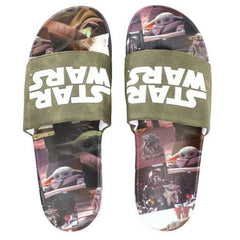
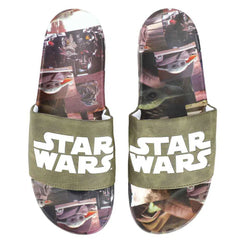
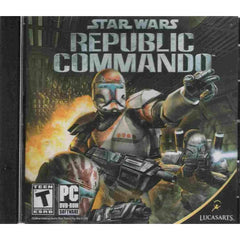

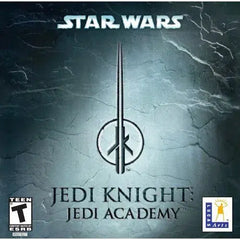



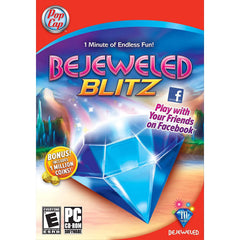

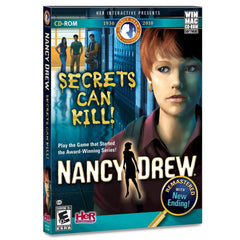

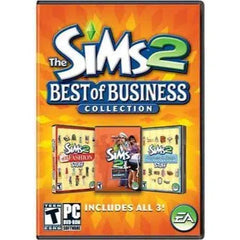
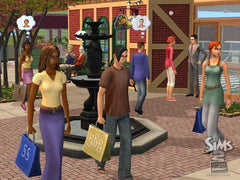
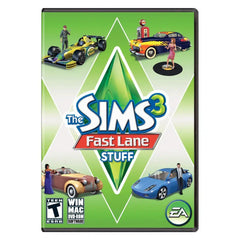
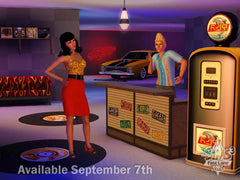


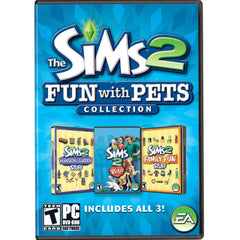
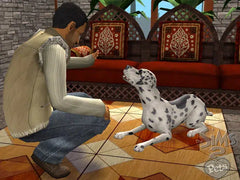
Since the 1970’s, Star Wars permeated every part of the cultural zeitgeist. Books, movies, shows, and, most importantly, video games have helped boost Star Wars into the cultural juggernaut it is today.
After Return of the Jedi, books and video games were the only ways to experience new stories in a galaxy far, far away. New content was few and far between for almost two decades, so LucasArts and book publishers filled the gaps of the story for a while. This led to some great (and not so great) stories added to the Star Wars canon.

The first Star Wars video game was Star Wars: The Empire Strikes Back for the Atari 2600 and the Intellivision. It’s a retelling of the opening scene of the film insofar as an Atari game can be a faithful retelling of anything. It was a very simple premise. You play as a Rebel pilot on Hoth and you destroy as many AT-ATs as possible before they reach their goal. A lot of Atari and other early console games were essentially watered down arcade games with no definite end and the goal is to just rack up as big of a score as possible; this was very much a game like that.

Star Wars: Return of the Jedi: Death Star Battle was a multi-console arcade style game released in 1983. Much like the previous game, Death Star Battle was a life-based score game where you pilot the Millenium Falcon to destroy the second Death Star. Once the Death Star is destroyed, players have to avoid debris until the game restarts at a higher difficulty.

Jedi Arena is a bit like Pong but it’s vertical instead of horizontal. There are two players, each with a shield, and a training remote in between. The remote fires lasers at each player. The players have to deflect the bolts back to each other to destroy their shield. After three hits, the shield is destroyed and that player loses. It’s a fun twist on a classic game.

Star Wars: The Arcade Game was hugely successful. There were two different versions: an upright cabinet and a sit-down version. The sit-down version really helped with immersion as it was a first person vector-line style game. You play as Luke Skywalker during the Battle of Yavin and your goal is to destroy the Death Star. It goes through three phases: a dogfight with Darth Vader, destroying the surface lasers, and the famous trench run. After each victory, the difficulty ramps up, like most quarter-munching games.

Star Wars: Return of the Jedi is an isometric game that takes place during the Battle of Endor. This also has three phases: Leia on a speeder bike, Chewbacca in an AT-ST or Lando in the Millenium Falcon, and, of course, the destruction of the second Death Star.
The most notable part of this game is that “Yub Nub,” the Ewok Celebration song, plays in the background of the high score screen.

Star Wars: The Empire Strikes Back returns to vector graphics, but they are more detailed than Star Wars: The Arcade Game. It’s another game that takes place during the Battle of Hoth. In the first half of the game, you are flying a Rebel snowspeeder, destroying Probe droids. After that level ends, you are tying tow cables to AT-AT and AT-ST walkers to destroy them and protect the shield generators. The second half lets you play as Han Solo in the Millenium Falcon. You must destroy as many TIE fighters in the astroid field above Hoth as possible. As usual, once those levels are done, it restarts at a higher difficulty.

In 1987, the only Star Wars Famicom game was released called, aptly, Star Wars. This is a side-scrolling platformer based loosely on Star Wars Episode IV: A New Hope, but there are several liberties taken with the plot. You play as Luke Skywalker, traveling the galaxy to rescue his friends from different planets. Each planet is portrayed by a generic background (sand, ice, etc.), typical for the Famicom and NES. At the end of each level, the player battles some sort of giant creature until they fight Darth Vader on the Death Star. It is considered very difficult since each enemy is a one-hit kill and you only have three lives and two continues.

The final Star Wars game of the 1980s was Star Wars: Droids for the Commodore 64, Amstrad CPC, and ZX Spectrum. Droids is an interesting part of Star Wars history. It was one of two cartoon series that were released in the ‘80s, along with Ewoks. They were very much a product of their time. This game is set in the Droids universe, but not canonical to the show. The plot, such as it is, follows R2-D2 and C-3PO as they try to escape from the Fromm gang’s prison on the moon Auren. The duo has to travel through eight different levels, avoiding droids that try to capture them. It’s a classic arcade-style game that is probably best avoided.

Star Wars is a side-scrolling platformer that has you switch among different characters with different powers to complete the levels. Most of the game takes place on Tatooine where Luke has to gather his friends, build a lightsaber, and gather shields for the Falcon. After leaving the planet, the party goes to the Death Star to save Leia. Luke has to travel through different parts of the Death Star to disable the tractor beam and escape from the trash compactor. Yes, he even fights the Dianoga, the monster that eats all the garbage. They escape the Death Star, meet up with the Rebels, then attack the Empire. Of course, there is a first-person Death Star trench run. It’s a really fun, challenging NES game.

Star Wars: The Empire Strikes Back also follows the plot really well. This is another side-scrolling platformer with some flying elements. The game starts with Luke out on the ice fields of Hoth riding his Tauntaun. He has to explore the caves around the field while fighting off Wampas. The Empire attacks the Rebel base where the game cuts to a snowspeeder level. Like most of these games, the goal is to take down all the AT-ATs and escape. From there, Luke travels to Dagobah to find Master Yoda. After training, Luke takes his X-Wing to Bespin to save his friends from Darth Vader. A very faithful adaptation.

Super Star Wars was massive. Released in 1992, it is considered one of the greatest platformers of the Super Nintendo (SNES). This is a retelling of A New Hope with a few narrative tweaks to make the story flow better. It’s an improvement over the NES version in every way. Better graphics, better controls, and an overall better game. It’s so well beloved that it was re-released in 2015 for PS4 and PS Vita with some minor updates.

Star Wars: X-Wing was a hugely successful flight simulation game that delved more into the history of the Rebellion and gave players an experience that felt like flying an X-Wing. The game starts a year before the Battle of Yavin and follows Keyan Farlander, a hotshot Rebel pilot. It’s divided into three “Tours of Duty”, each focusing on a different overall objective all culminating in the destruction of the Death Star.
The game also included other missions that would have Keyan pilot two different ships: A-Wings and Y-Wings. There were two expansions as well. For those who don’t know, expansion packs were essentially downloadable content (DLC) but on physical disks and usually were just fully fleshed out games using the same game engine. The first, Imperial Pursuit, is the evacuation of Yavin 4 and the search for a new base. The second, B-Wing, focuses on the creation of a new starfighter and the creation of Echo Base on Hoth.

Star Wars: Rebel Assault was an incredibly difficult rail shooter. It follows Rookie One, a Luke Skywalker stand-in who pretty much does everything Luke does in the movies. This game takes a lot of liberties with the plot of the movies. Rookie One has to prevent AT-STs from destroying Mos Eisley Cantina, then travels to Hoth to save the Rebel base. After that, Rookie blows up the Death Star. It was well received at the time, but the Full-Motion Video (FMV) sequences and atrocious controls left it forgotten today.

Much like Super Star Wars before it, Super Star Wars: The Empire Strikes Back is a faithful retelling of the film. This side-scrolling platformer featured multiple playable characters, a variety of levels, and Mode 7 graphics. Mode 7 was a way to simulate 3D graphics on a 2D graphics chip; this was used for the vehicle sections.

Star Wars Chess was heavily inspired by the game Battle Chess. It’s essentially just chess but with Star Wars characters. The really fun parts are the battles. When a piece takes another one, there is a unique animation depending on the pieces involved. If you enjoy chess and Star Wars, this is honestly a really fun time.

The final game in the Super Star Wars trilogy, Super Star Wars: Return of the Jedi, was essentially the same game as Empire, except with a different plot. Again, this game follows the plot of the film closely and was well received by critics and fans alike.

The sequel to X-Wing was released in 1994 with Star Wars: TIE Fighter. In this game, players take on the role of Maarek Stele, a TIE fighter pilot for the Empire. It’s the first chance players had to play as an Imperial. There were seven Tours of Duty with three more added in the expansion Defender of the Empire. Overall, the game offered improvements over X-Wing with better graphics and more weaponry. It’s still considered one of IGN’s best PC games of all time.

In 1995, LucasArts introduced their first video game character that would leave a lasting impact on the canon. Dark Forces’ main character, Kyle Katarn, was the first time players could play as a bounty hunter / mercenary. This first-person shooter (FPS) was the first to incorporate multiple tiered levels and the ability to look up and down. The plot centers around Katarn and his friend Jan Ors running missions for the Rebel Alliance. Each task reveals more information about the Empire’s “Dark Trooper Project” which Katarn destroys in the end.
It’s hard to overstate how big this game was in the community. There was a strong following online that created custom levels and modded maps for it. Hasbro created action figures for both Katarn and the Dark Troopers because they were so popular. There was even a full-cast audio drama by William C. Dietz. Most importantly, it spawned a whole series of games. This was truly the first videogame megahit LucasArts had.

Star Wars: Rebel Assault II: The Hidden Empire is another rail shooter starring Rookie One. Set after the Battle of Yavin, the plot revolves around finding out what the Empire plans to do with their new TIE Phantoms. The game is mostly a playable cutscene with FMV sequences that were filmed in front of a blue screen. While commercially successful, it was panned by critics as too easy with really bad acting.

While Dark Forces might have been the first megahit, 1996’s Star Wars: Shadows of the Empire was even bigger. Shadows was a third-person action adventure game for the Nintendo 64 and PC. Based on the novel by Steve Perry, the game follows Dash Rendar, a mercenary and friend of Han Solo, as he battles his way through the galaxy to find the leader of the crime syndicate Black Sun. Shadows of the Empire truthfully deserves its own deep-dive article, so that is just a surface-level explanation. The game was pretty well received overall, but it has the clunky controls and terrible camera angles that were a signature of this era of gaming.
It is important to note how big of a hit this book was. There aren’t a whole lot of books that get adapted into videogames. On top of the game adaptation, there was a trading card line, toys, a soundtrack, and multiple comic adaptations.

Star Wars: Jedi Knight: Dark Forces II is a sequel to Dark Forces that once again follows Kyle Katarn. This time, Katarn has discovered his connection to the Force and wants to hone his powers. He plans to travel to the Valley of the Jedi which is an ancient power source for the Jedi. However, a group of Dark Jedi are on the move to claim the power for themselves. This was released to near universal acclaim. Dark Forces II is still a first-person shooter, but now incorporates a lightsaber which was one of the highlights according to reviews.

Star Wars: Masters of Teräs Käsi was the first fighting game for the series. Masters was set between The Empire Strikes Back and Return of the Jedi where the Emperor recruits the assassin Arden Lyn to take out the leaders of the Rebels. Luke and the gang challenge Arden to fight in the unarmed hand-to-hand combat style of Teräs Käsi. This leads to a tournament of fighting between the Rebels and the Empire.
Players had a wide variety of characters to choose from including Hoar, a Tusken Raider; Thok, a Gamorrean Guard; Mara Jade (making her videogame debut); Princess Leia (in the bikini for some reason); Boba Fett; and the other main characters of the series. The game did not have great reviews. The controls were slow, the fighting was leaden, and it was just overall uninteresting. As cool as this could have been, it was a pretty big flop.

This game is exactly as it is billed. It’s Monopoly and Star Wars merged together. There are eight playable characters from both sides of the Galactic Civil War. All locations for purchase are Star Wars-ified except for the corner spots. It’s exactly what you want when playing a game of Monopoly.

While Star Wars Monopoly was a big hit with the fans, the same can’t be said about Star Wars: X-Wing vs. TIE Fighter, the third installment in the popular franchise. The story mode of this game was completely cut out in favor of multiplayer battles and for personal practice. This was a huge blow to fans of the series, so that was corrected with the expansion later that year. Balance of Power was released with a full series of campaign battles and added other spacecraft that were missing in this version. Although technically better than the other installments, this was another miss according to the fans.

Star Wars: Yoda Stories was designed to be a pick-up-and-play type game with small challenges that were quick to finish. It’s similar to those games that come pre-installed on a new computer like Chip’s Challenge and Solitaire. It’s a really unique entry and looks like quite a lot of fun.

This year started off strong with an expansion pack for Dark Forces II called Star Wars: Jedi Knight: Mysteries of the Sith. This expansion had a highly anticipated addition to the series: Mara Jade being a fully playable character.
Mara Jade was the Hand of the Emperor who turned to the Light after meeting Luke; she eventually becomes his wife. This game is set five years after Dark Forces II and follows Jade as she seeks out Kyle Katarn to help finish her Jedi training. It was mostly received well like most of the Katarn games thanks to its improved graphics and, of course, Mara Jade. This series continued to succeed and got a sequel in 2002 called Jedi Outcast.

Star Wars: Rebellion (in the UK, the game is known as Star Wars: Supremacy) is a real-time strategy game (RTS) where players can play as either the Galactic Empire or the Rebel Alliance to build an army. It’s a subgenre of RTS called 4x which means that it focuses on all parts of developing a culture and empire, not just the military aspects. It was very poorly reviewed and considered one of the biggest disappointments in the Star Wars franchise... at least until The Phantom Menace released.

Star Wars: Droid Works is an educational game that is aimed at children. C-3PO and R2-D2 are tasked to shut down an Imperial droid factory. However, they have to build certain droids in order to get to the next area. Through experimenting with different parts, players can learn about all sorts of scientific principles and math; it’s the original STEM game.

One of the bigger releases of the year was Star Wars: Rogue Squadron for the N64 and PC. It’s set during the Galactic Civil War after the Battle of Yavin. Players are able to witness the creation of Rogue Squadron, a band of X-Wings that handle any mission, no matter how dangerous. Unlike the other X-Wing games, this is not a flight simulator, but an action game where the camera is outside the cockpit. This brought a lot of players who were intimidated by X-Wing to the game, making it one of the best selling Star Wars games. It was also one of the first N64 games to use the Expansion Pak which gave it better graphics and a smoother experience.

The Star Wars Trilogy Arcade was a rail-shooter arcade game that featured pivotal scenes from each of the Original trilogy films. A New Hope has the destruction of the Death Star, The Empire Strikes Back reenacts the Battle of Hoth, and Return of the Jedi does the speeder chase on Endor and the destruction of the second Death Star. It’s a big improvement from the other arcade games of the past: the graphics are 3D, there are lots of secrets to find, and it features multiplayer capabilities.
This era of Star Wars games mostly followed a formula. They were flight games or action games for the most part. The games that were outside of those genres were few and far between. These games were released when there were no other movies than the Original trilogy. Game designers weren’t willing to risk challenging the IP or contradicting preset lore, so original characters were very sparse.
However, after the release of The Phantom Menace in 1999, Star Wars games became more abundant with multiple releases each year. The next era of Star Wars games was truly the Wild West, with games that vary from racers to MMORPGs.
It’s great to look back at what kept the series alive for many young Star Wars fans of that time. Though a majority of the games from before the Prequels don’t hold up from a technical standpoint, they propped up a fanbase that was dying for new content.


The first Star Wars video game was Star Wars: The Empire Strikes Back for the Atari 2600 and Intellivision in 1982
Yes. Most of the Star Wars games from the NES and SNES were ported to the Gameboy and/or Game Gear.
Most Star Wars games were published by LucasArts with the exception of some of the earliest ones.
No. Almost all of the Star Wars games featured in this article are not considered current canon. Elements from the games may be considered canon.
Kyle Katarn is the protagonist of the Dark Forces and Jedi Knight series of games. He is a mercenary and Jedi knight.
No, there have never been any M rated Star Wars games ever released (as of writing this in 2023).
A majority of Star Wars games are available on PC. Many of the games can be found on Steam or GOG.
Poggers.com sells stuff about what you’re reading.
$65.00 away from free shipping!

Leave a comment